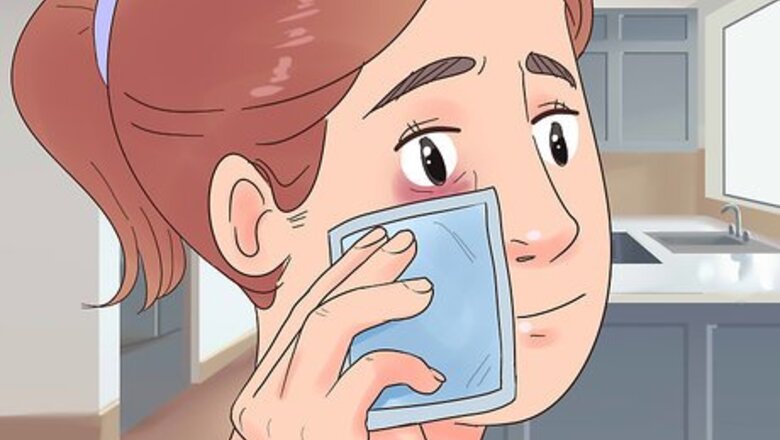
views
Initially Treating a Black Eye

Apply ice to the area around your eye. Apply a cold compress, washcloth filled with ice, or a bag of frozen vegetables to the swollen area in 10-minute intervals. Apply the ice pack for approximately 20 minutes every hour during the first couple days of healing. Begin this treatment immediately and continue it for 24 to 48 hours. Press on the skin around the eye, not on the eye itself. Make sure you wrap the ice pack in a towel or cloth. Applying ice directly to your skin can cause skin damage and frostbite.
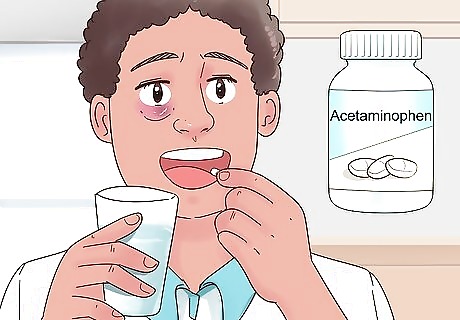
Take a pain reliever. If the pain or discomfort is hard to bear, take an over-the-counter pain reliever. Acetaminophen (Tylenol) is generally considered to be the best option. Ibuprofen (Advil) works too, depending upon which you have available. Both are available for purchase over-the-counter at your local pharmacy or drugstore. Aspirin should be avoided since it decreases the blood's clotting ability. Follow the instructions on the label when taking the medication. For acetaminophen, don't take more than 4 g in 24 hours. For ibuprofen, the max dose is 2 g in 24 hours. If you have kidney or liver problems, talk with a doctor before taking pain medications like these.
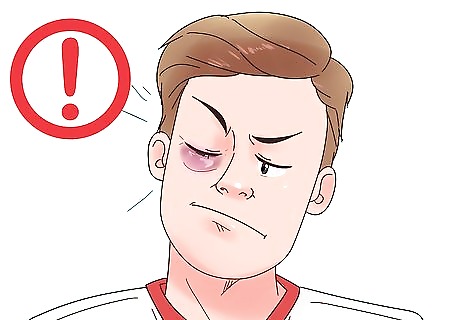
Do not force your eye open. Oftentimes, a black eye can be accompanied by significant swelling around the eye. If this is the case for you, and if it is challenging to open your eye, there is no need to force it open unnecessarily. As long as you have ruled out that it is nothing more serious than a black eye (that there are no other medical concerns), there is no problem with keeping your injured eye shut if it is painful to open.

Protect your eye during any "at-risk" activities. As your black eye heals (which normally takes one to two weeks in total), you will want to ensure that you wear glasses or other protective gear if you find yourself in any situation that could potentially cause further damage to your eye. Or, if you injured your eye during sports, refrain from participating in this sport until your eye has fully healed.
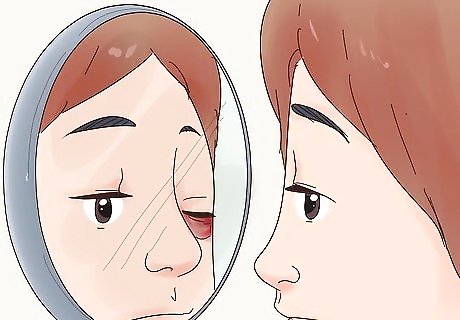
Check for additional damage. A black eye is bad enough, but not necessarily serious on its own. If accompanied by other eye injuries, however, you will need to seek professional medical care as soon as possible. You may have suffered severe damage to your eyes or a severe head injury. Look closely at the white portion and colored iris of your eye. If you see any blood in these spots, you could have injured your eye in a critical way. Schedule an urgent appointment with an ophthalmologist. If you have vision problems like blurring, double vision, or an increased sensitivity to light, you should also contact an eye specialist. Other signs of potentially critical damage include severe pain when moving the eye, severe headache, numbness of the face, swelling or depression of the eye or eye socket, nosebleeds, and/or dizziness.
Taking Continued Care
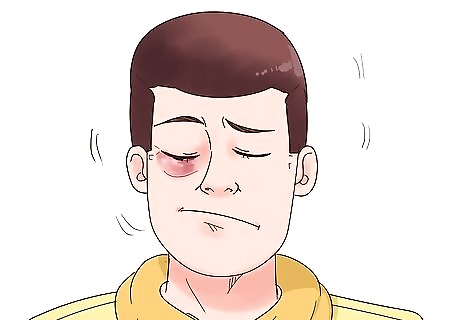
Avoid putting pressure on the eye or causing more damage. The damaged area will be sensitive until the discoloration fades. Putting pressure on the eye can make it hurt more, but it can also aggravate the damaged blood vessels beneath the skin, causing a worse or prolonged injury. Before you get the swelling to calm down, you should also avoid forcing your eye to stay open for a prolonged period of time.
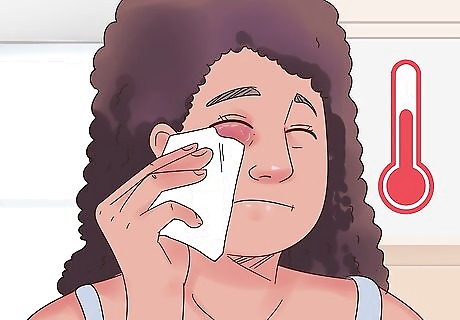
Switch to moist heat after 24 to 48 hours. After a day or two of using an ice pack to soothe the swelling, you should switch tactics and begin applying moist heat to the injured area. Hold a warm, moistened washcloth or compress against the affected area. Do not use a heating pad, since this provides dry heat and can actually be too hot, thereby causing more damage to the sensitive skin of your face. Apply the warm compress in 10-minute intervals, each of which should be separated by a period of rest lasting no less than 10 minutes each. Do not apply the warm compress directly to the eye. Only apply it to the skin around the eye. Warm compresses promote an increased amount of circulation to the damaged blood vessels. This allows pooled blood trapped below the surface of your skin to be re-absorbed, which can speed up the healing process.
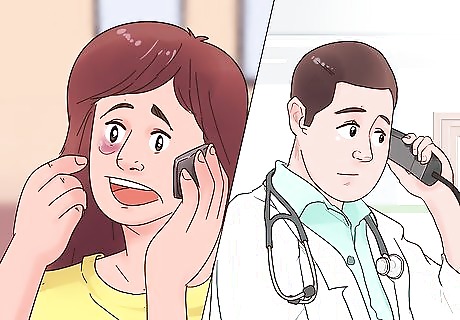
Call a doctor if the damage worsens or does not fade. Your black eye should fade significantly after a week and a half or so. If it has not faded much within that time frame, call your general practitioner and schedule an appointment. Black eyes tend to look worse before they get better, so don't be alarmed if your eye looks worse during the first few days following the injury. If you have any reason to suspect there is still bleeding, however, then you should see your doctor right away.
Hiding a Black Eye with Cosmetics
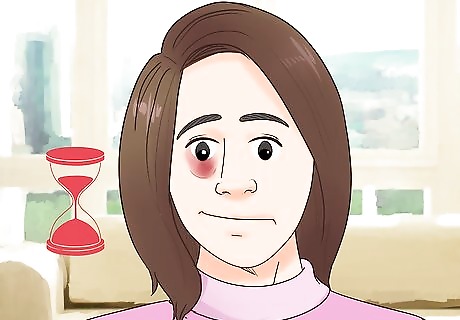
Wait until the swelling goes down. Immediately after you receive the injury, your first priority should be to begin the healing process. Applying makeup to the black eye while it is still swollen could irritate the skin and cause skin redness. Additionally, the cosmetics used to conceal your black eye are likely to wear off as you apply cold packs to the injured area, making application prior to treatment fairly pointless. Wait until you have entered the warm compress stage of treatment before applying any makeup to the injured area, and apply makeup as little as possible. If you feel you need to cover your eye when you need to leave the house or if you are having people over, that's okay, but when you're just at home on your own, you should avoid applying makeup.
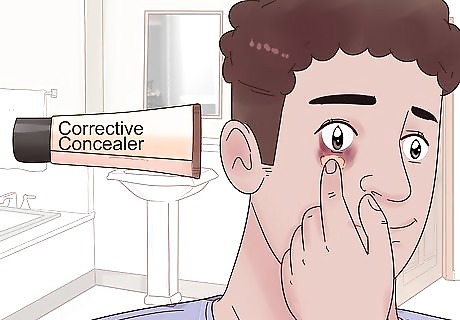
Choose a corrective concealer. For best results, use a liquid corrective concealer in a yellow or green shade. Liquid corrective concealers are easier to apply and blend than most creams and require the use of less pressure on the skin. You must use a corrective concealer first before using a standard concealer if you wish to disguise the black eye. Standard concealers match the tone of your skin and can only blend uneven tones together. Corrective concealers rely on the principle of complementary colors to correct discolored portions of skin. A yellow concealer generally works best for a black eye in its early stages, when it appears to have deep purple undertones. As the black eye lightens and takes on more red tones or yellow-brown tones, you may need to switch to a green corrective concealer. Apply the corrective concealer with your fingers. Use your fingers to dab specks of corrective concealer all around the blackened area of your skin. Use light pressure to gently and carefully blend the concealer into your skin, covering the entire damaged area.
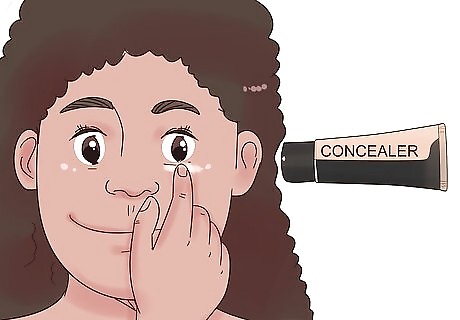
Follow with your normal concealer. Once the corrective concealer has dried, use a normal concealer that matches your skin tone over it. A normal concealer can blend any uneven shading caused by the corrective concealer.
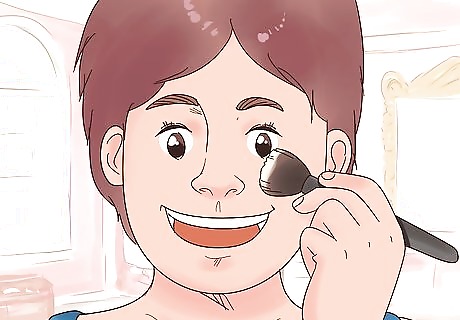
Apply additional make-up only as desired. The two concealers should be enough to hide your black eye without any additional make-up. If you want to continue with your standard make-up routine, however, you can do so.



















Comments
0 comment